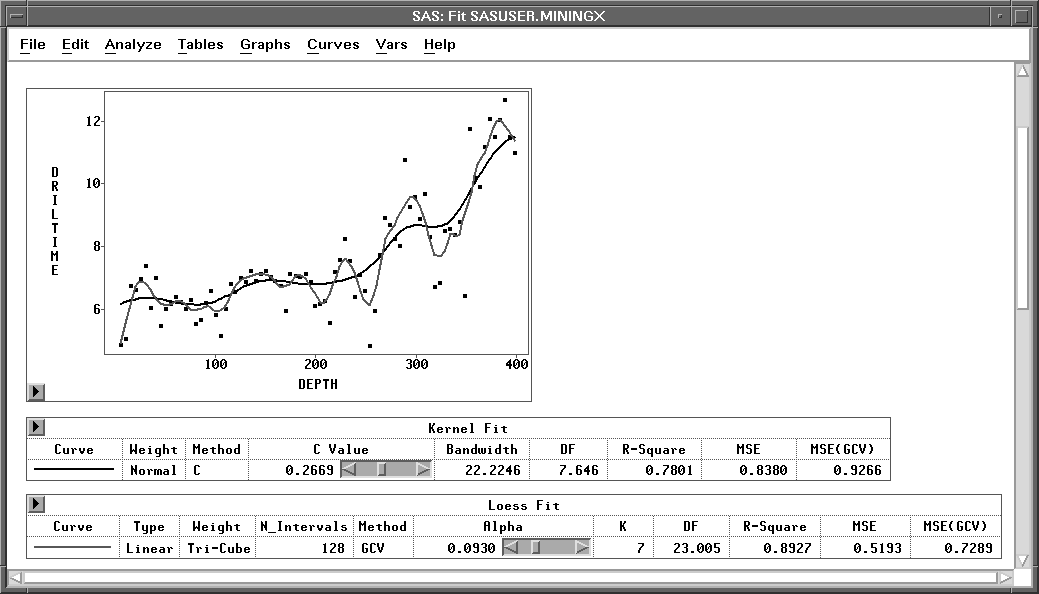Chapter Contents
Previous
Next
|
Chapter Contents |
Previous |
Next |
| Fitting Curves |
| Choose Curves:Loess to display the loess fit dialog. |

| Click on OK in the dialog to display the loess fit, as shown in Figure 13.18. |
As with the kernel fit, the best fit for loess smoothing
is determined by generalized cross validation (GCV).
GCV and other aspects of curve-fitting are described
in Chapter 39, "Fit Analyses."
You can also output predicted values from fitted curves. To output predicted values from the preceding loess fit, do the following:
| Choose Vars:Predicted Curves:Loess. |
This displays the same loess fit dialog as shown in Figure 13.17.
| Click on OK in the dialog to output the predicted values from the loess fit. |
A new variable, PL_DRILT, should now be added to the data window.

You can use the slider control to adjust the
loess curve just as with other curves.
For loess, the slider controls the ![]() value for the fit.
The greater the
value for the fit.
The greater the ![]() value, the smoother the fit.
value, the smoother the fit.
On rare occasions, you may want to fit a curve for
![]() values outside the bounds of the slider.
For loess and other curves, the bounds of the slider
are chosen for best fit in most cases.
If you need to fit a curve with unusual parameter values,
you can specify these values in the curve dialog.
values outside the bounds of the slider.
For loess and other curves, the bounds of the slider
are chosen for best fit in most cases.
If you need to fit a curve with unusual parameter values,
you can specify these values in the curve dialog.
Related Reading | Fit Curves, Chapter 39. |
|
Chapter Contents |
Previous |
Next |
Top |
Copyright © 1999 by SAS Institute Inc., Cary, NC, USA. All rights reserved.